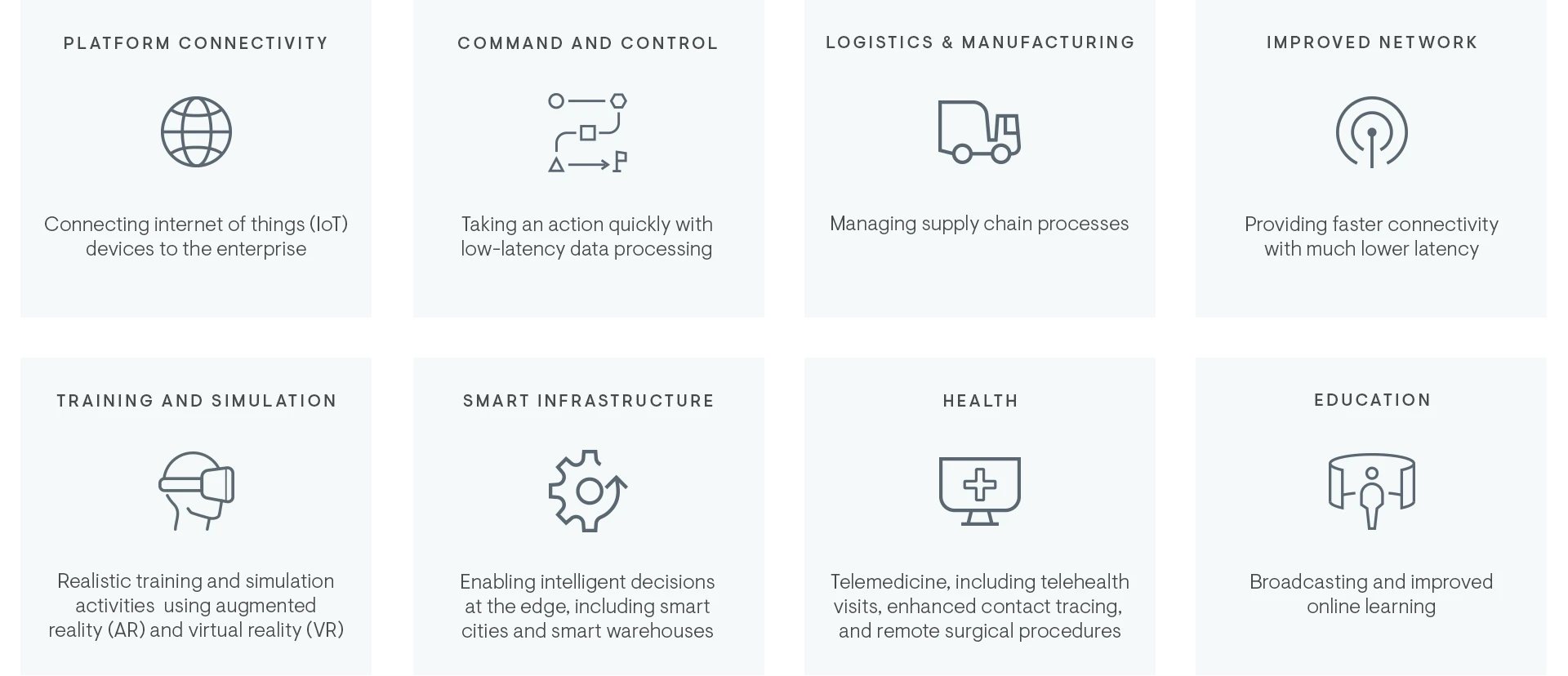Across the federal government, 5G is emerging as a powerful tool in agencies’ arsenals when it comes to enhancing, accelerating, and delivering on the mission. For the Department of Defense in particular, 5G holds enormous potential across a variety of use cases.
Together with our long-time partner Cisco, GDIT recently examined how private networking can enable 5G for mission-critical activities. Our goal was to assist defense agencies, as well as others, as they further envision “the art of the possible,” and adopt new 5G capabilities. This is important because private 5G networks can enhance existing systems and capabilities and can also help to solve myriad challenges while at the same time delivering higher levels of efficiency and productivity, improving safety, and contributing to overall mission effectiveness.
We published our findings in a new whitepaper titled, How Private 5G Enhances the DoD and Other Federal Agencies. Below are some of the paper’s key takeaways.
Connecting Everything, Everywhere
Secure and reliable connectivity are the underpinnings for many private 5G use cases with the technological capabilities for providing seamless operations in denied, degraded, intermittent, or limited bandwidth (DDIL) environments. Whether applications of private 5G be at home or abroad, 5G can deliver the reliable low latency and high-bandwidth necessary for a tactical edge use case, for example.
Designed To Enhance Existing Systems
A private 5G network can operate as its own independent network, however integrating 5G technology with existing systems presents the greatest value. Given that most facilities already have some form of networking, be it Wi-Fi and or wired connectivity, adding private 5G into the mix requires thoughtful planning and the right technology partners for integrating with existing systems. A private 5G network that is designed and built to integrate with existing networks offers fundamental advantages such as establishing common identity and policy profiles that will simplify and unify network operations.
Trusted To Work
Since Private 5G is meant to support mission critical operations, it must be designed with a zero-trust architecture. Zero trust has evolved into the preferred approach to cybersecurity. Much the way 4G transformed how people get from place to place, 5G’s performance enhancements will help enable a transformation of defense capabilities. With high reliability and low latency, 5G enables sensor-to-sensor communications, allowing AI-enhanced applications to process data at the edge, and this information can then be shared with other entities or sensors.
Use Cases with Relevance Across Agencies
Throughout the public sector there is a diverse array of needs and requirements ready to benefit from private 5G network solutions that combine simplicity with resiliency and security. While our focus was on the needs of the Department of Defense, we know other agencies such as the Federal Emergency Management Agency (FEMA), Customs and Border Protection (CBP), Veterans Affairs (VA), and the
United States Postal Service (USPS) share similar, mission-critical delivery requirements. These types of use cases include:
Designing And Planning for Today And Tomorrow
Together, Cisco and GDIT have been supporting the public sector for more than 30 years and our teams understand that 5G and edge solutions are part of a larger ecosystem of tools/capabilities that must work together securely and seamlessly to deliver outcomes critical to our customers’ ability to meet mission objectives. Since private 5G is not a one-size-fits-all solution, it must be designed for the specific demands of the use case and customer.
Agencies need security-first thinking with Zero Trust architecture and to establish a secure foundation for today and into the future that will enable them to plan for a future with 6G and beyond. Agencies can also remove the complexity by exploring private 5G as a service, which is cloud-managed, and customer controlled. The network remains the customer’s network, so the agency is always in control of the processes and operations while the hardware and software are maintained and managed externally. Finally, agencies should explore solutions that are designed to integrate with existing systems, that can unify digital assets across networks, that can evolve with their needs and that are right sized for their applications and use cases of today with the extensibility to grow
To learn more about 5G and how agencies are using it, I encourage you to check out GDIT’s Agency Guide to 5G, and to discover how GDIT and partners, like Cisco, help agencies plan their 5G futures, please visit www.gdit.com/5G.







